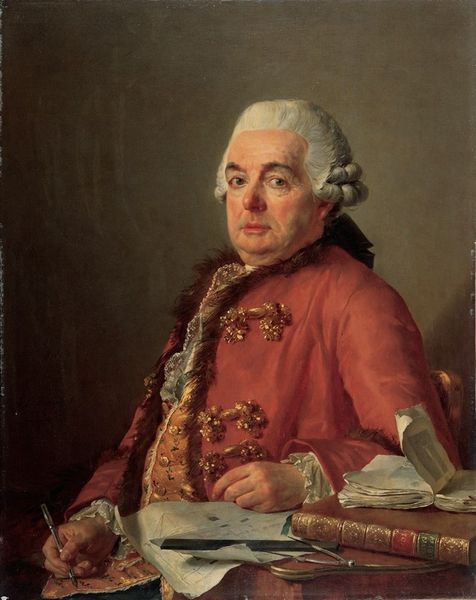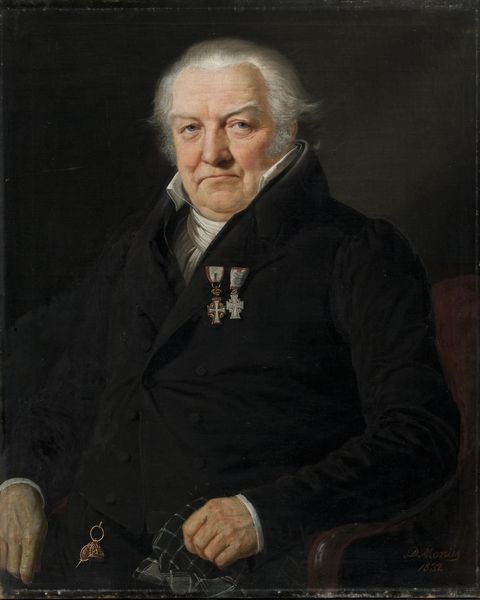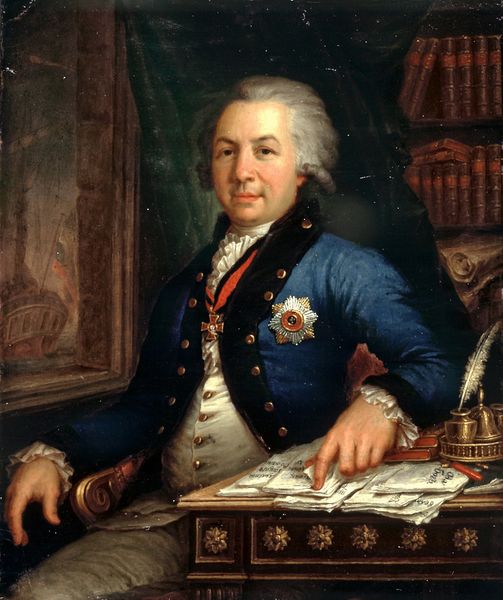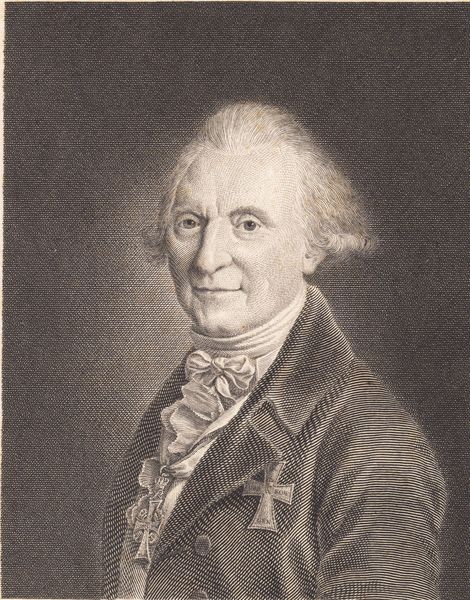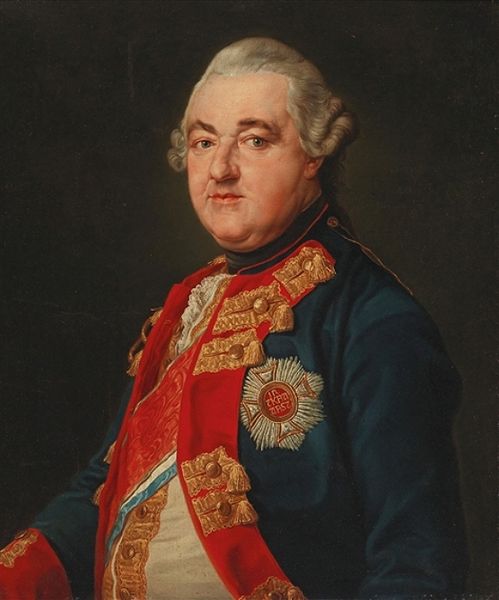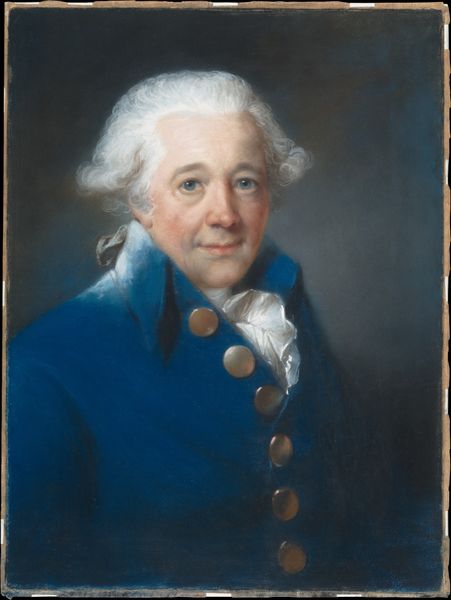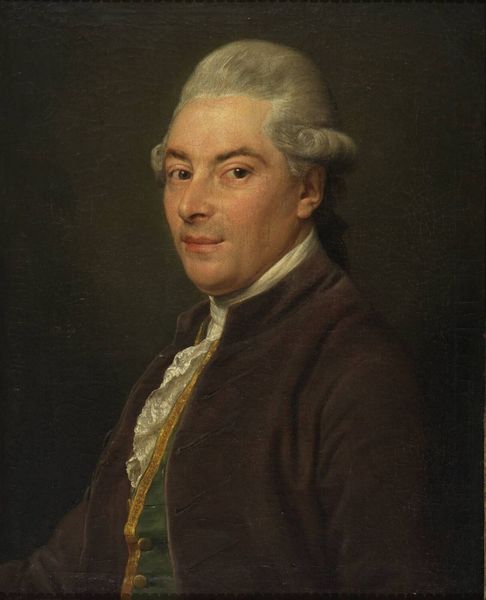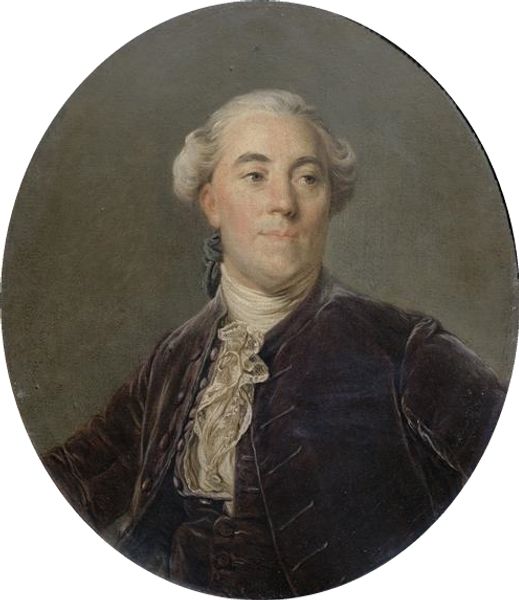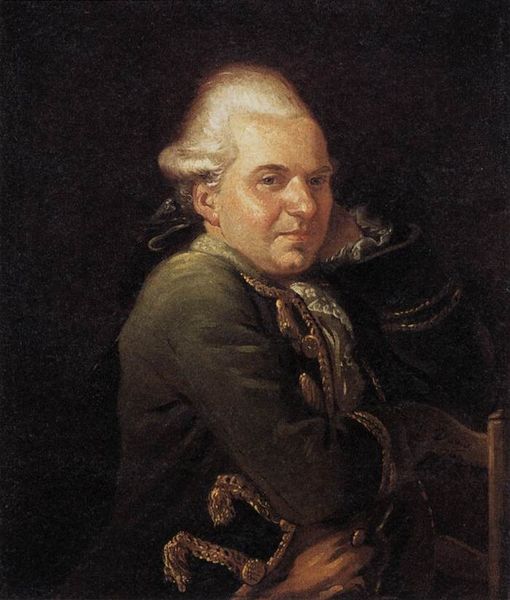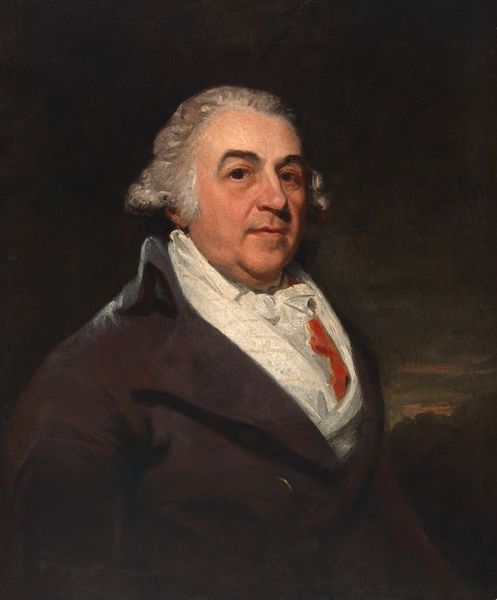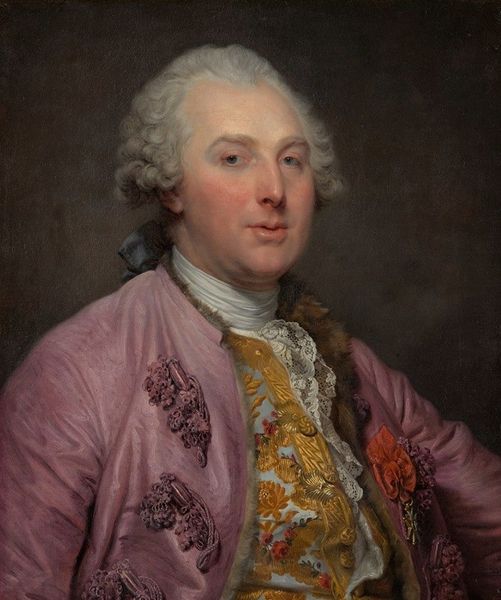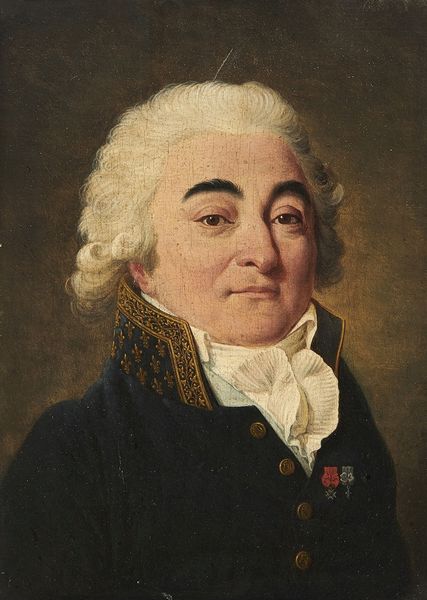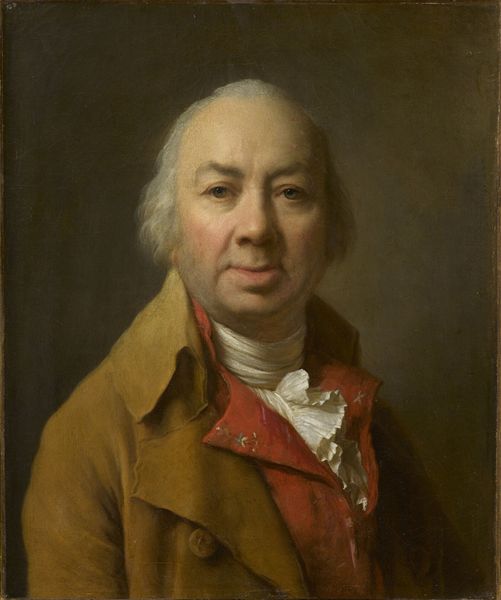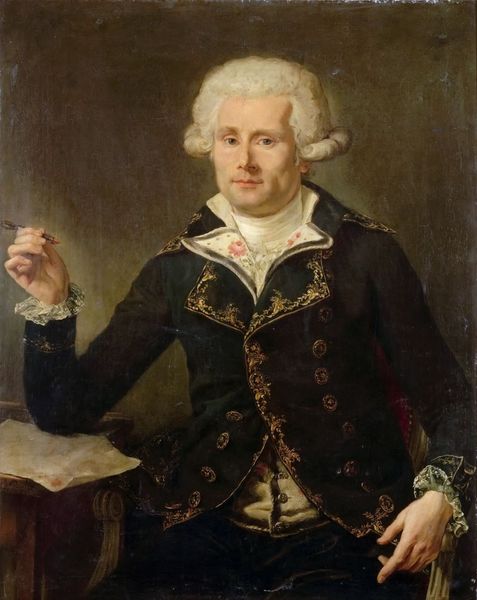
painting, oil-paint
#
portrait
#
neoclacissism
#
portrait
#
painting
#
oil-paint
#
history-painting
#
facial portrait
#
realism
Dimensions: 91.5 x 72.5 cm
Copyright: Public domain
Curator: This is Jacques-Louis David's "Portrait of Charles-Pierre Pecoul," painted in 1784. A striking example of Neoclassical portraiture now residing here in the Louvre. Editor: He has a very relaxed posture; a sense of bourgeois comfort and self-satisfaction comes across strongly. He looks like he enjoys good food and intellectual debate. There is this assuredness that can read as contentment but also as a display of privilege. Curator: The painting really captures the essence of its time, the pre-Revolutionary era. Charles-Pierre Pecoul was a prominent treasurer. This portrait serves as an insight into the societal values that elevated such figures. Editor: I am interested by this red accent, barely visible under his arm, adding depth to the composition and suggesting the opulence of his unseen surroundings. David seems very good at bringing to our eyes a classist view of its time. I mean, Neoclassical art and its patrons upheld very specific social structures and norms. The question then becomes, what does it mean to exhibit works that are tied to systems of power that were extremely exclusionary? Curator: That's a very pertinent point. Museums are not politically neutral spaces, and displaying a painting like this without acknowledging the history of inequality it represents would be irresponsible. Pecoul would've commissioned David to portray him in this style because it aligned with the values and aesthetics of the elite at the time. A controlled color palette reinforces his status, but also connects with those who saw art as an uplifting, instructive enterprise. Editor: Precisely. Consider the implications of David choosing to immortalize Pecoul this way, cementing the legacy of a treasurer, in the age that will very soon be soaked in the French revolution. Curator: Yes, and situating David’s portrait of Charles-Pierre Pecoul in this historical context reveals not only the man himself but also the broader structures that supported and sustained his position. Editor: Thank you for that nuanced breakdown of context. Thinking through the art object and thinking through our interpretation helps to avoid reinforcing dated ideology.
Comments
No comments
Be the first to comment and join the conversation on the ultimate creative platform.
